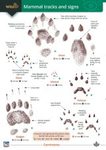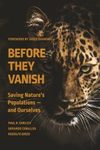About this book
Semi-aquatic mammals are some of the rarest and most endangered mammals on earth. What binds them together in the minds of biologists, despite their diverse taxa and body forms, are evolutionary traits that allow them to succeed in two worlds – spending some time on land and some in the water. Semi-Aquatic Mammals fills a crucial void in the literature by highlighting the important ecological roles and curious biology of these remarkable animals.
In this unique book, wildlife ecologist Glynnis A. Hood presents the first comprehensive examination of a global suite of 140 freshwater semi-aquatic mammals. Each one has overcome the distinct ecological challenges of thriving in both aquatic and terrestrial habitats as part of everyday life. Covering millions of years, Hood's exploration begins with the extinct otter-like Buxolestes and extends to consider the geographical, physical, behavioral, and reproductive traits of its present-day counterparts.
Hood explains how semi-aquatic mammals are able to navigate a viscous environment with almost no resistance to heat loss, reveals how they maintain the physical skills necessary to avoid predation and counter a more thermally changeable environment, and describes the array of adaptations that facilitate success in their multifaceted habitats. She also addresses specific conservation challenges faced by these mammals.
Her analysis takes readers to the haunts of intriguing semi-aquatic mammals from around the world,
- introducing the "paradoxical platypus," an Australian egg-laying monotreme that detects prey through electroreception
- venturing into the swamps and mangroves of Southeast Asia, where fishing cats wave their paws above the water's surface to lure prey
- trawling the streams and lakes of South America, where the female water opossum uses its backward-facing pouch to keep her babies warm during deep dives
- spending time with species that engineer freshwater habitats into more productive and complex systems, including North American beavers and Africa's common hippopotamus
Featuring award-winning artist Meaghan Brierley's stunning illustrations throughout, Semi-Aquatic Mammals is an unparalleled reference on some of the world's most tenacious and fascinating mammals.
Contents
List of Figures
List of Tables
Preface
Acknowledgments
Chapter 1. Introduction
Part I. Geographical Distribution and Habitats
Chapter 2. Paleobiology
Chapter 3. Ranging across the Continents
Chapter 4. Ecological Niches
Part II. Physical Adaptations
Chapter 5. Morphology
Chapter 6. Physiological Adaptations
Chapter 7. Locomotion and Buoyancy
Part III. Feeding Ecology
Chapter 8. The Predators: Foraging Strategies and Niches
Chapter 9. The Prey: Predator-Prey Interactions
Part IV. Reproduction
Chapter 10. Mating and Offspring
Part V. Conservation Challenges and Management Approaches
Chapter 11. Status and Threats
Chapter 12. Introductions and Reintroductions
Chapter 13. Management Approaches
Appendix A. Taxonomic List of Semi-aquatic and Riparian-Dependent Mammals
Appendix B. Online Resources
Glossary
References
Customer Reviews
Biography
Glynnis A. Hood is an ecologist and professor of Environmental Science at the University of Alberta. She has extensive experience in wetland and wildlife ecology, and is the author of The Beaver Manifesto.
Medical illustrator Meaghan Brierley earned her BFA in design art and biology from Concordia University, Montreal, her MScBMC in biomedical communications from the University of Toronto, and a PhD in communication studies from the University of Calgary.
















![How to Find and Identify Mammals [Revised Edition]](http://mediacdn.nhbs.com/jackets/jackets_resizer_medium/21/210208.jpg?height=150&width=106)

















